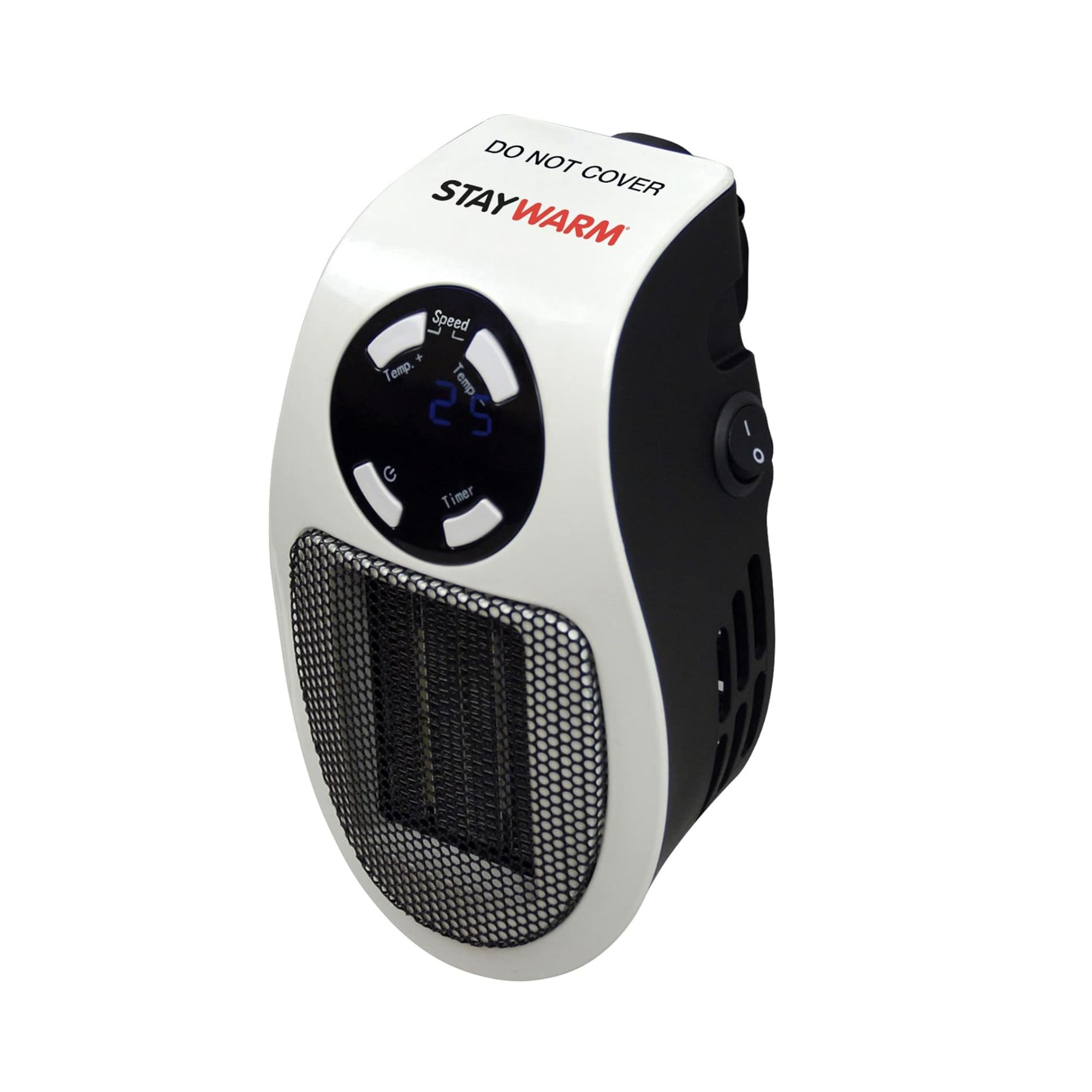I followed Martin Lewis' advice to 'heat the human, not the home' and tried this £18 plug-in heater to stay warm while WFH
It's perfect for quickly heating small spaces


Winter is right around the corner, and I've been on the lookout for ways to stay warm in my small home office without breaking the bank on inflated energy bills. During the daytime, it's just me in the house, and I haven't yet justified the need to turn on the heating so I've been relying on alternative methods to stay warm at home – especially when it's just me in one room.
My goal was simple: find something that would offer me warmth, and do so in a cost-effective way. This was in part due to Martin Lewis' advice to 'heat the human, not the home', but I'm all the more grateful for this shift of mindset that's certainly saved me a lot in the long-run. That's when I came across a compact £18 plug-in heater from Dunelm. It promised all the features I was after: quick heat, low energy use, and a simple design. So naturally, I decided to give it a go. Even if it wouldn't end up competing with some of the best electric heaters I've tested, for only £18, what's there to lose?
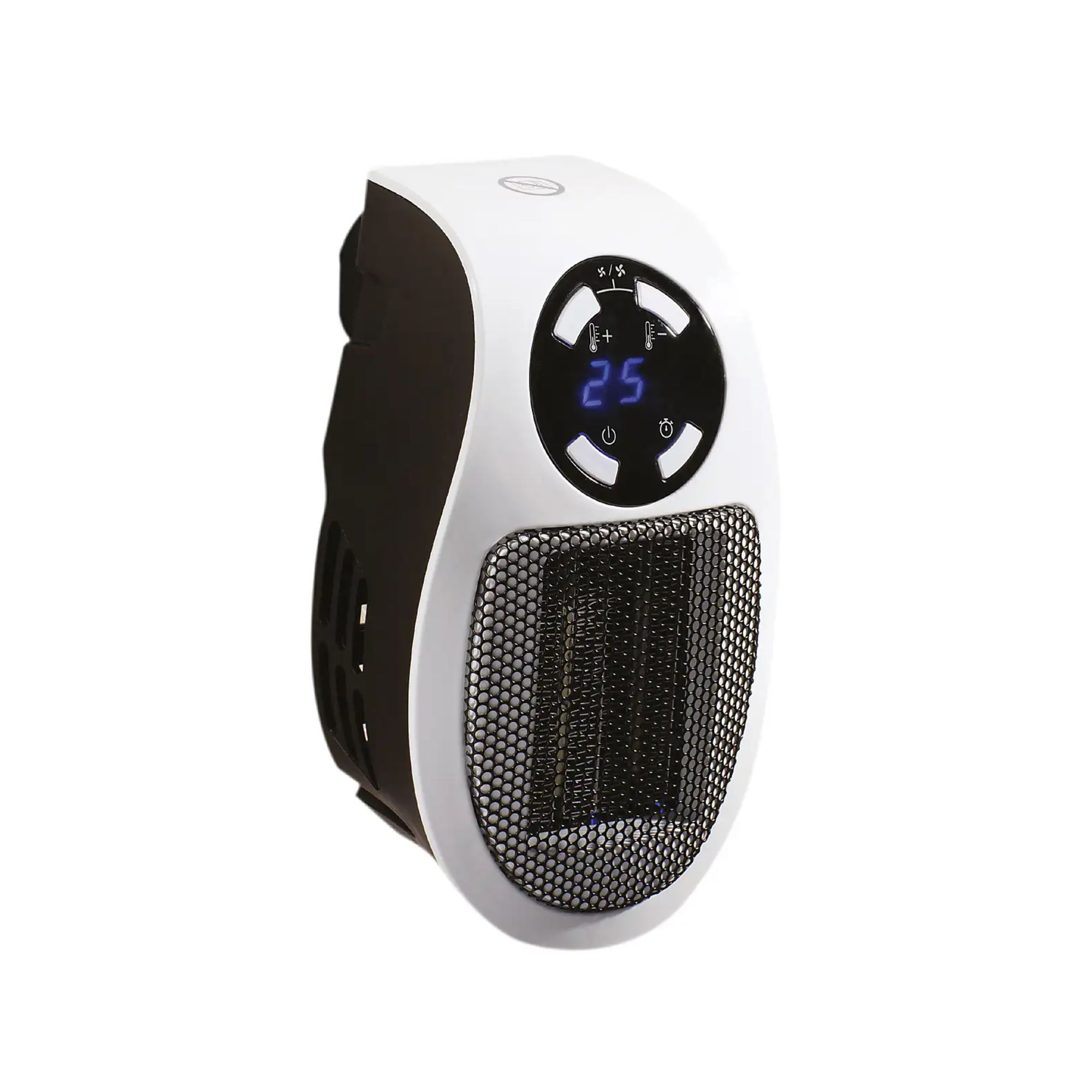
Designed with patented technology, this heater delivers 500W of comforting warmth with its efficient ceramic heating element. The LED display and digital thermostat provide precise control over the temperature, and you can set the timer and choose from two fan speed settings for ultimate convenience.
My first impressions of the Dunelm plug-in heater was that it was small, but surprisingly powerful. It comes in a black and white colour scheme, which I would argue is pretty stylish all things considered. It plugs directly into the wall and is ideal for small rooms of around 10m² – which is just about perfect for a home office or any small box room where you might spend a lot of time. With a wattage of only 500W, it doesn't use a lot of energy at all, which was probably one of the biggest appeals for me for keeping my house warm this winter.
Considering some electric heaters can cost more to run than central heating in some cases, as some models can boast power outputs of up to 2000W, they can get costly to run very quickly. With that in mind, this is probably one of the cheapest electric heaters to run that I've personally come across, costing you around 12p per hour to run at the current rate of 24.5p per kWh.
I knew I didn't want to heat my entire home when I was only going to be in one room for hours at a time. Instead, I wanted something that focused on warming me, and this little heater did just that, and for the right price too.
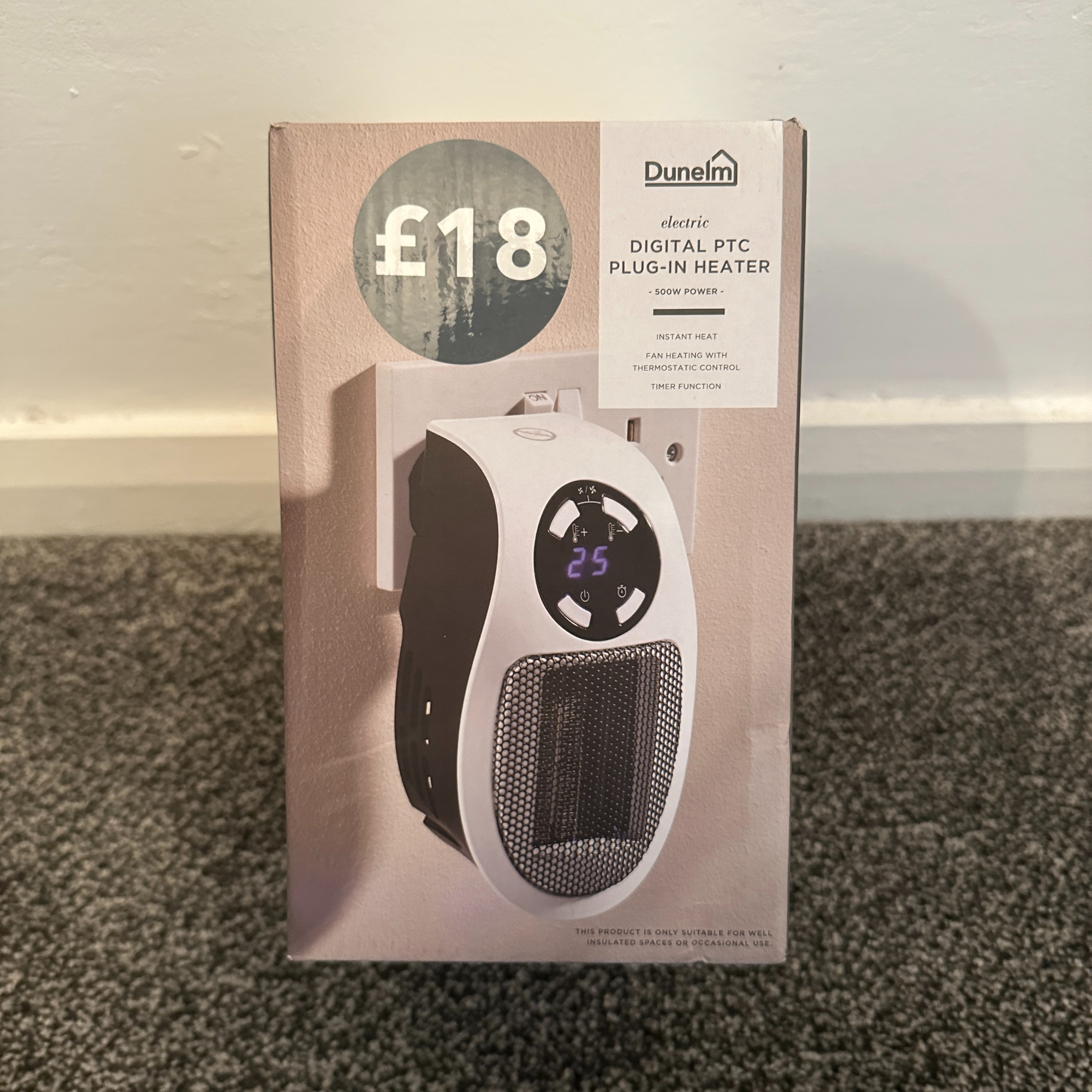
The Dunelm plug-in heater came in a secure, compact box
One of the most notable features about this plug-in heater was its adjustable temperature, ranging from 15°C to 30°C. This allows you to set the warmth exactly how you like it. I usually keep mine somewhere in the middle, in the low to mid 20s range as I don't need it blasting at full power to keep warm while WFH. It also lets you toggle fan speed between low and high, which you can access by pressing the two temperature buttons at the same time. This will affect how quickly the heat spreads, but again, I usually keep this on the low setting and find it more than enough without making my immediate environment feel too stuffy.
Another thing I found particularly convenient about this plug-in heater was that it had a timer, which can be set from from 0-12 hours. Some electric heaters of mine (yes, plural... I've tested four others thus far to see which are worthy of a spot in our buying guide) don't have a built-in timer, which has resulted in me accidentally leaving them on for way too long than I'd like to admit (which is a big electric heater mistake in itself, I know). But, with this Dunelm one, I don't have that issue.
Sign up to our newsletter for style inspiration, real homes, project and garden advice and shopping know-how
I set it for an hour or two, keep my door shut to keep the heat in, and by then, I'm usually feeling cosy enough to not need the blast of warmth anymore as I've got my jumper and blanket on. Usually, when I turn on an electric heater, it's just because I need it to kickstart my warmth, and am fully aware that the heat usually dissipates really quickly. However, do be warned that if you don't set the timer, the plug-in heater will continue to run indefinitely, or until it's reached the desired temperature to avoid overheating. So, to avoid mistakenly racking up your energy bills, it's best to set a timer.
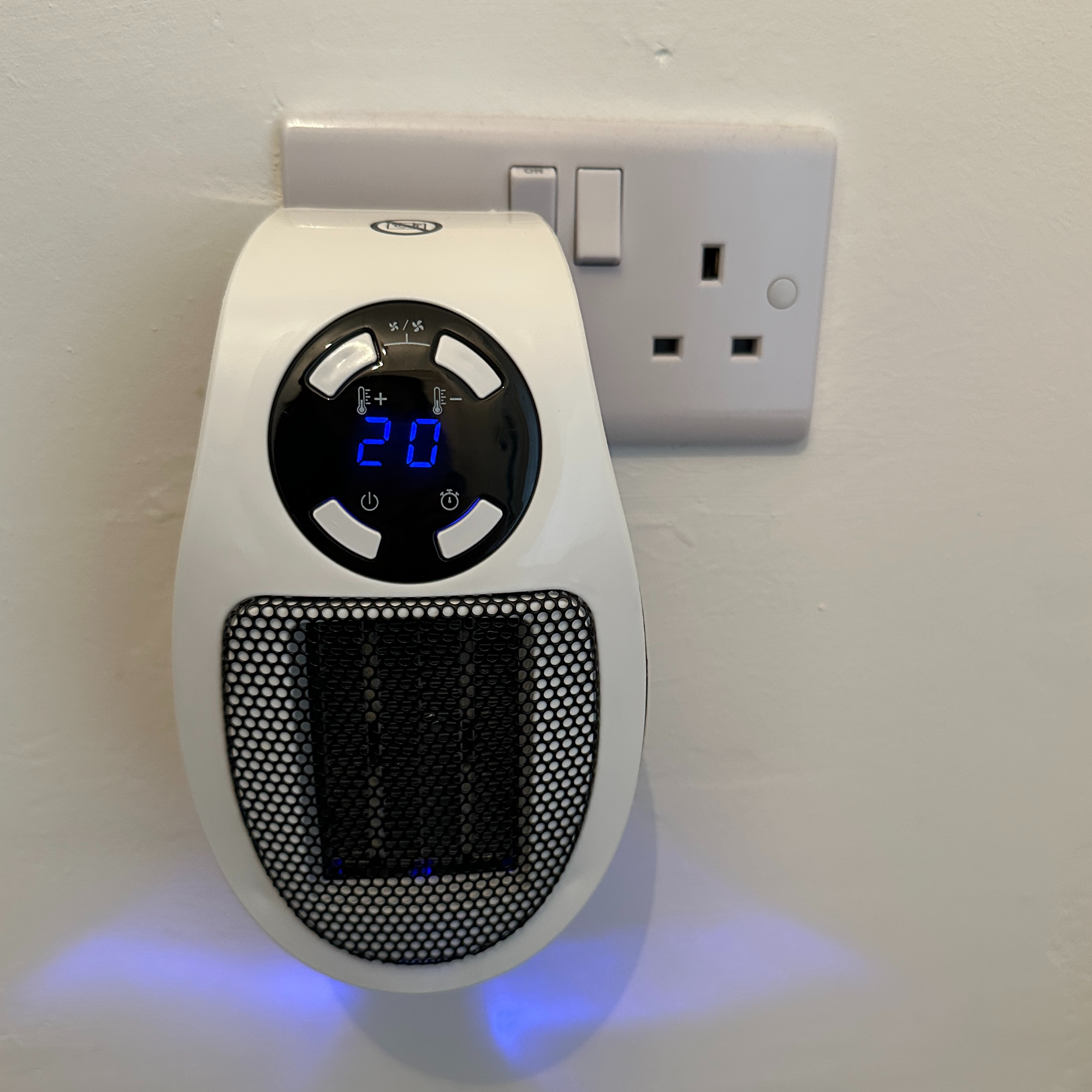
Testing the Dunelm plug-in heater in my home office
While this plug-in heater is definitely small when compared to traditional portable electric heaters, I still severely underestimated its size. It's described as compact, but it hangs down quite a bit from the socket when it's plugged in, so you need to make sure there's enough space around it for safety. In my small office, this wasn't an issue, but this is something to keep in mind if you have furniture close to the walls, as you don't want to fall foul to putting your electric heater in the wrong place.
One downside though is that it's loud. When it's on, it makes a noticeable whirring sound, especially on the high fan setting. Personally, I don't mind the noise too much as I'm used to working with background sounds like white noise, music, and even talking. But, if you're someone who values a quiet environment then I'll tell you right now that this might not be for you. The low setting kept the noise to a minimum, but it was still noticeably louder than other electric heaters I own and have tested previously.
After using the Dunelm heater, I also decided to try a similar model from Russell Hobbs (£24 at Very).

The Dunelm and Russell Hobbs 500W plug-in heaters side by side
Both heaters are almost identical in terms of design and features, with the Russell Hobbs one just sporting an all-black design – but an exact black and white version is also available. The Russell Hobbs plug-in heater also has a 15°C to 30°C temperature range, a fan speed option, and a timer. The heat output is pretty much the same, but if I had to be specific, I did notice that the Russell Hobbs model was slightly quieter when on the low fan speed setting, which could be a plus for those who are sensitive to noise. But even then, I found that it was still quite loud.
In terms of performance, there really is very little to separate them. But, if I had to choose, I'd lean towards the Dunelm model purely because it's priced lower at £18, while the Russell Hobbs one retails for £24.99. However, it does go on sale very often and can be found for around £18-19 on a majority of retailer websites.
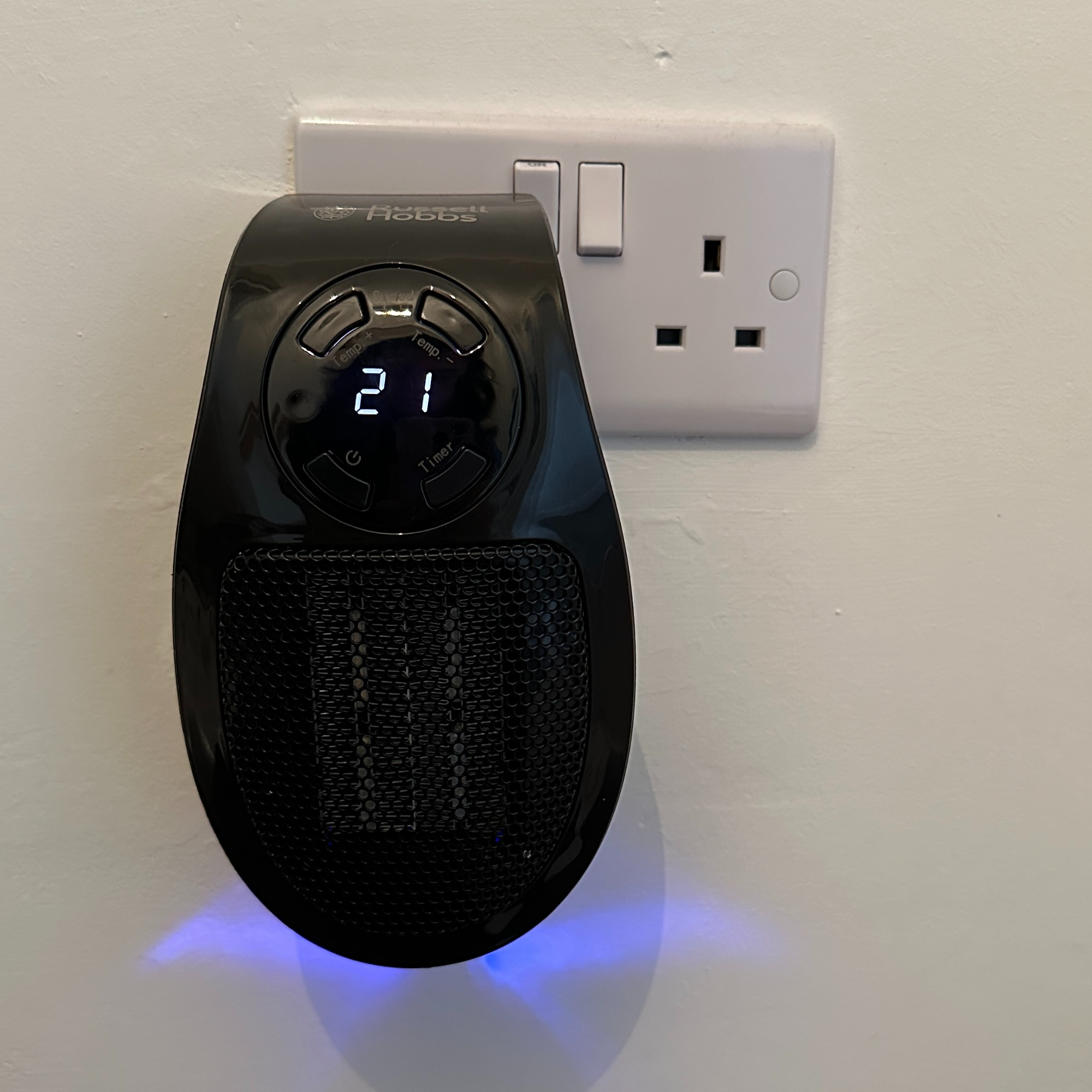
Testing the Russell Hobbs 500W plug-in heater in my home office
It's also worth noting that Russell Hobbs also has a 700W version of their plug-in heater, which costs a little more but is arguably more compact. At a 700W power output, it'll cost more to run too (about 17p per hour) but could also be a good option if this design is more your style. In fact, the Russell Hobbs 700W ceramic plug-in heater features in our current electric heater buying guide.
Shop plug-in heaters
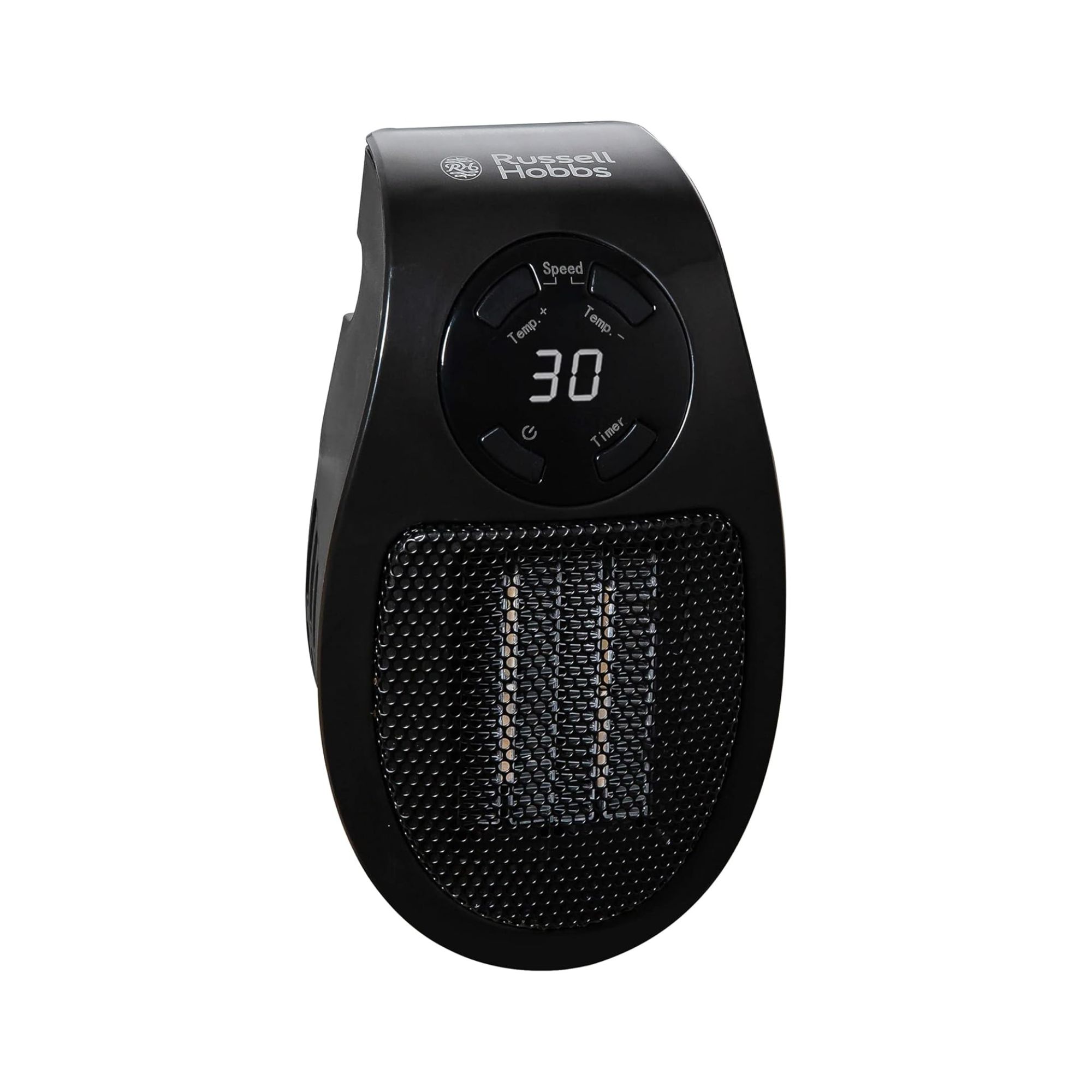
This is the other plug-in heater I tested alongside the Dunelm one, and I found it to be just as powerful and efficient at its job. It's ever so slightly quieter, and still a fantastic pick-up.

The is Russell Hobbs' most popular version in their plug-in heater series, offering a bit more of a compact build and a slightly higher heat output, earning a top spot in our electric heater buying guide.
All in all, the Dunelm plug-in heater is, in my opinion, an excellent choice for anyone needing a quick and reliable heating solution for a small space. Yes, it's not entirely perfect – namely because of the noise or its height dimension, but it offers a lot of value for its low price point, costing just 12p per hour to run. It's easy to use, energy-efficient, and most important, keeps you warm and snug without needing to crank the heating up throughout the entire house.
If you're after a budget-friendly way to stay cosy this winter without breaking the bank, I'd definitely recommend giving it a try.

Jullia was Ideal Home’s Junior Writer from 2022-2024 and the Ideal Home Certified Expert in Training on Vacuums having spent over 60 hours testing different models. She’s always loved all things homes and interiors, graduating with a bachelor’s degree in Architectural Studies from the University of Nottingham where her love for writing blossomed following her internship at ArchDaily. Now focused on home tech and cleaning, Jullia works on writing features and explainers to help people make the most of their home appliance investments, putting the newest launches through their paces. When she isn’t writing, she loves exploring the city, coffee shop hopping, and losing hours to a cosy game or book.
